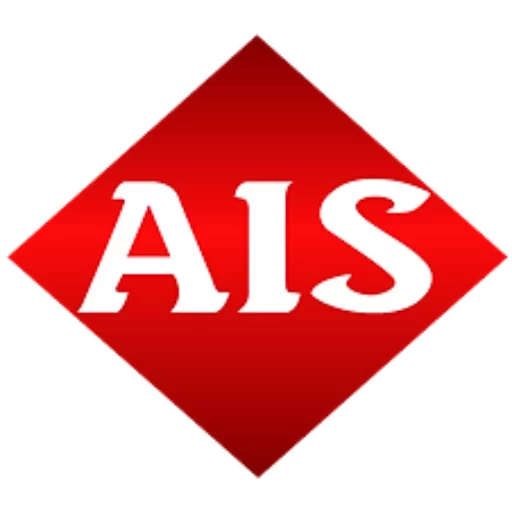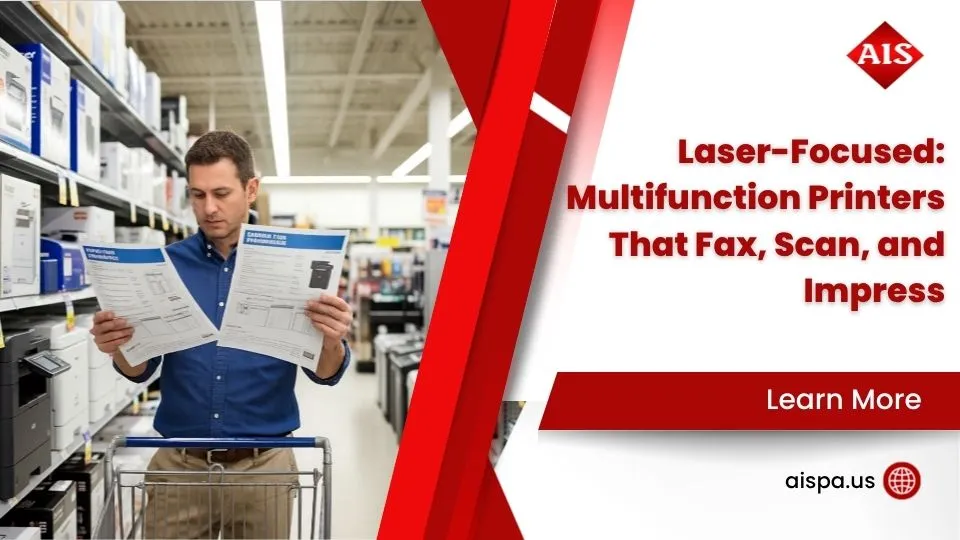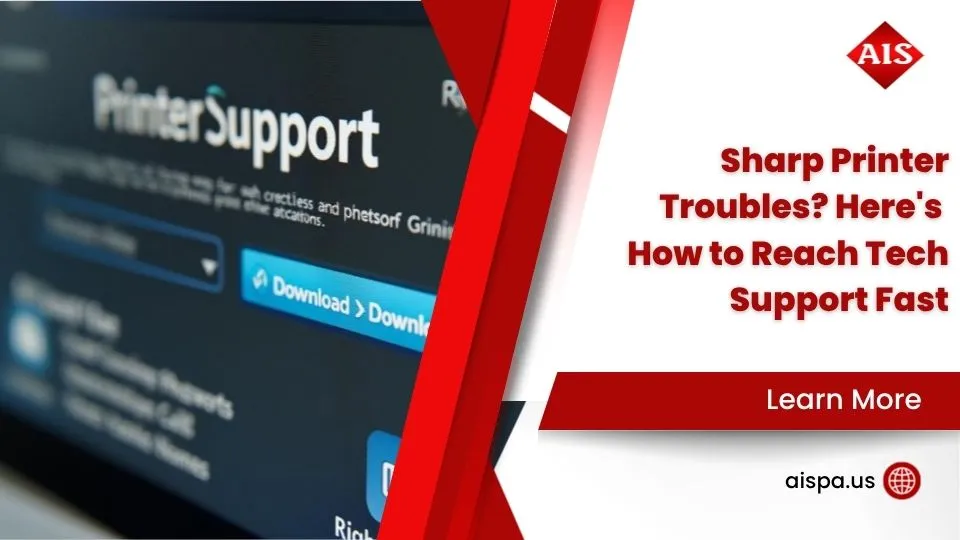Cloud Managed Printing: A Guide to the Top Solutions
Modern businesses face fast-evolving business landscape, cloud managed printing offers a powerful solution for organizations looking to streamline their operations. As companies accept hybrid work and cloud-first IT strategies, traditional print servers often become a burden. In fact, 73% of businesses expect to increase their use of cloud-based print management by 2025. This shift means less reliance on outdated, on-premise infrastructure and more flexibility for your team.
If you’re exploring cloud managed printing solutions, here’s what you need to know about its core benefits compared to traditional setups:
- Infrastructure: Move from physical print servers to a fully cloud-hosted environment, reducing hardware costs and maintenance.
- Accessibility: Enable secure printing from any device, anywhere, ideal for remote and hybrid workforces.
- Management: Centralize control and administration of your entire print fleet through a single, intuitive dashboard.
- Security: Improve document and data protection with advanced cloud-based security features, often built on Zero Trust principles.
- Cost Efficiency: Reduce IT burden, eliminate server costs, and gain granular insights to optimize print spending.
Moving to the cloud for print management can simplify your IT, boost security, and provide the flexibility your business needs to thrive.

What is Cloud Print Management? Beyond Basic Cloud Printing
The terms “cloud printing” and “cloud managed printing” are often used interchangeably, but they represent two very different approaches. Think of it as the difference between simply enabling a function and managing an entire system.
Basic cloud printing focuses on convenience. It allows a user to send a document from any device to a printer over the internet, which is great for remote access. It’s a simple way to print from home or another office.
However, cloud managed printing is a comprehensive solution that replaces traditional print servers. It’s not just about printing from the cloud; it’s about controlling, securing, and optimizing your entire print environment through the cloud. This approach provides centralized administration, advanced security features like secure pull printing, and detailed analytics to track costs and usage. It’s like moving from driving a single car to managing an entire fleet with advanced tracking and maintenance systems.
To see the difference clearly, here’s a quick comparison:
| Feature | Cloud Printing (Enabling) | Cloud Print Management (Controlling) |
|---|---|---|
| Primary Goal | Facilitate remote printing access. | Optimize, secure, and manage the entire print environment. |
| Infrastructure | Often relies on a cloud service acting as a conduit to a local printer or a basic cloud printer. | Eliminates print servers; centralizes all print infrastructure in the cloud. |
| Security | Basic secure transmission; may not include advanced user authentication. | Secure pull printing, user authentication (PIN/badge), data encryption, Zero Trust principles. |
| Analytics | Limited or no reporting on print usage. | Comprehensive reporting on usage, costs, environmental impact, and device health. |
| Control | User-centric, focused on individual printing convenience. | IT-centric, offering granular control over users, devices, and policies. |
| Cost | Focuses on convenience; potential for unmanaged costs. | Drives cost reduction through optimization, waste reduction, and predictable spending. |
| Complexity | Relatively simple setup for individual users. | More complex initial setup, but simplifies long-term IT management. |
| Scalability | Scales for individual user needs. | Scales dynamically for entire organizations, from SMBs to large enterprises. |
In short, while basic cloud printing makes remote printing possible, cloud managed printing brings intelligent control, security, and efficiency to your entire print strategy. It transforms printing into a fully managed, secure, and cost-effective business operation.
The Core Benefits for Today’s Businesses
The shift to cloud managed printing delivers tangible benefits across an organization, from the IT department to individual employees.

Significant Cost Reduction and Impressive ROI
One of the most compelling advantages of cloud managed printing is substantial cost savings. By eliminating physical print servers, you cut costs for hardware, maintenance, and energy consumption. This also reduces the burden on your IT team, freeing them from managing print drivers, queues, and troubleshooting. Most cloud solutions operate on a subscription-based model, which converts large capital expenditures into predictable, manageable monthly operating costs. This offers similar financial flexibility to the Benefits of Leasing a Printer, allowing you to avoid large upfront investments.
Empowering Hybrid and Remote Work
Cloud managed printing is the perfect fit for today’s distributed workforce. It gives your team the freedom to print from any device—laptop, tablet, or smartphone—to any company printer, regardless of their location. As long as they are connected to the internet and authenticated, they can print securely. This “anytime, anywhere” capability is vital for maintaining productivity for both remote and in-office staff and is a key component of modern Document Workflow Automation.
Improved Security
Printers are often a security risk; 66% of organizations rank print as a top-five security concern. Cloud managed printing tackles this by centralizing security. It enables secure pull printing, where jobs are held in a personal queue until the user authenticates at the printer with a PIN, badge, or mobile app. This prevents sensitive documents from being left in output trays. These solutions also use modern authentication, Zero Trust principles, and strong encryption to protect data at every step, often leveraging trusted cloud infrastructure like Microsoft Azure or Google Workspace.
Streamlined IT Management
With no on-premises print servers or complex driver management, cloud managed printing simplifies IT administration. Your team can manage the entire print environment—deploying drivers, configuring settings, and overseeing users—from a single, centralized portal. This significantly reduces the time and effort needed to maintain print infrastructure, freeing up your IT department to focus on higher-value strategic tasks.
Achieving Sustainability Goals
Cloud managed printing helps your organization achieve its sustainability goals. Eliminating physical servers reduces energy consumption, while secure pull printing cuts down on paper and toner waste by preventing uncollected print jobs. This aligns with a commitment to Eco-Friendly Print Management, minimizing environmental impact. The analytics provided by these systems can also reveal further opportunities for waste reduction.
Understanding the different cloud models is key to choosing the right cloud managed printing solution for your business needs, budget, and available IT resources.

1. Public, Private, and Hybrid Cloud Hosting:
- Public Cloud: Your solution runs on a vendor’s shared cloud infrastructure. This model is highly scalable, cost-effective, and reduces the management burden on your IT team.
- Private Cloud: The resources are dedicated solely to your organization, either on-premise or hosted by a third party. This offers maximum control and security but typically comes at a higher cost and requires more IT involvement.
- Hybrid Cloud: This model combines public and private clouds, allowing you to keep sensitive data in a private environment while leveraging the public cloud for other tasks. It offers a balance of flexibility, security, and control.
2. Single-Tenant vs. Multi-Tenant Architecture:
- Single-Tenant: You get a dedicated instance of the software. This provides complete data isolation, high customizability, and control, often associated with private cloud deployments.
- Multi-Tenant: Multiple customers share the same software application, with their data kept separate and secure. This is the standard for most SaaS products, offering affordability, easy maintenance, and rapid scalability.
3. The ‘as a Service’ (XaaS) Model, particularly SaaS:
Software as a Service (SaaS) is the predominant model for cloud managed printing. Instead of buying and installing software, you subscribe to a service accessed via the web. The provider manages all the infrastructure, updates, and security. This is the same model used by familiar applications like Microsoft Office 365 and Google Workspace. For printing, a SaaS model is a hassle-free approach where the vendor handles all the technical complexities.
4. Self-Hosted vs. Fully-Hosted Solutions:
You will choose between two main deployment paths:
- Self-Hosted: You run the print management software on your own cloud infrastructure (e.g., your private cloud). This gives you maximum control but requires more setup and maintenance from your IT team.
- Fully-Hosted (SaaS): The vendor manages everything. You simply subscribe and use the service, which significantly reduces the load on your IT department and converts costs to a predictable operating expense. Most modern cloud managed printing solutions are fully-hosted.
Choosing the right model depends on your specific needs for control, cost, and IT resources. We can help you determine the best fit for your organization.
Essential Features for Your Cloud Managed Printing Solution
When choosing a cloud managed printing solution, it’s crucial to identify the features that will deliver the most value in terms of efficiency, security, and control. Here are the essential features every business should look for.

- Centralized Administration Portal: A single dashboard to manage all printers, users, and policies across your entire organization, simplifying IT management and providing complete visibility.
- Automated Printer Driver Deployment: Eliminates a major IT headache by ensuring users always have the correct, up-to-date drivers without manual intervention.
- Secure Pull Printing and User Authentication: Also known as “Follow-Me” printing, this feature holds jobs in a secure queue until the user authenticates at the printer via PIN, badge, or mobile app. This prevents unauthorized access to sensitive documents.
- Data Encryption and Zero Trust Security: End-to-end encryption protects data from the user’s device to the printer. Adherence to Zero Trust principles ensures no user or device is trusted by default, requiring verification for all access.
- Integration with Identity Providers: Seamless connection with your existing identity systems like Microsoft Entra ID or Google Workspace enables single sign-on (SSO) and simplifies user management.
- Reporting and Analytics: Comprehensive reports provide insights into print usage, costs, and environmental impact, enabling data-driven decisions for optimization and cost allocation.
- Mobile Printing Support: Robust support for iOS and Android devices allows users to print conveniently from their smartphones and tablets.
Key features for a small business cloud managed printing solution
For Small to Medium-sized Businesses (SMBs), the focus is on simplicity and cost-effectiveness:
- Ease of Setup: A solution that is quick to deploy with minimal IT involvement.
- Low-Cost Subscription: Affordable, predictable pricing models.
- Basic Reporting: Core insights into print usage and costs.
- Simple User Management: Easy tools to add/remove users and set permissions.
- Scalability for Growth: The ability to easily add users and devices as the business expands.
Key features for an enterprise cloud managed printing solution
Enterprises require more sophisticated and scalable features:
- Advanced Security and Compliance: Support for industry regulations, data residency options, and certifications (e.g., ISO).
- Granular User Policies: The ability to set specific rules for users and groups, such as print quotas or color printing restrictions.
- Deep IT System Integration: Connectivity with tools beyond identity providers, such as ERP and Document Management Software Solutions.
- High-Availability and Failover: Built-in redundancy to ensure printing is always operational.
- In-Depth Analytics: Advanced, customizable reporting for strategic decision-making and cost control.
Aligning these features with your business’s size and security needs is key to a successful implementation.
Conclusion: Future-Proofing Your Print Strategy
The journey toward cloud managed printing isn’t just about keeping up with technology trends—it’s about positioning your business for whatever comes next. We’ve walked through the compelling benefits: the flexibility to support your hybrid workforce, dramatically improved security that protects your sensitive documents, and significant cost savings that can free up budget for other strategic initiatives.
Think about it this way: every day you delay moving to the cloud, you’re essentially choosing to maintain expensive print servers, deal with driver compatibility headaches, and miss out on the productivity gains that come with modern print management. The 73% of businesses planning to increase their cloud print management use by 2025 aren’t just following a trend—they’re making a smart strategic move.
Aligning your print infrastructure with your overall cloud-first IT strategy makes perfect sense when you step back and look at the bigger picture. If you’re already using cloud-based email, file storage, and collaboration tools, why would you want to keep your printing stuck in the past? Cloud managed printing completes that digital change puzzle, giving you a truly unified, modern IT environment.
The beauty of this transition lies in how it supports the way people actually work today. Your team members want to print that important contract from their home office, grab documents at the main office printer with just a badge tap, and know their sensitive information isn’t sitting in some output tray for anyone to see. A modern cloud managed printing solution makes all of this possible while giving your IT team the centralized control they need.
At Associated Imaging Solutions, we’ve helped countless Philadelphia-area businesses steer this transition successfully. We know that every organization has unique needs—whether you’re a growing company in King of Prussia looking to scale efficiently, or an established business in Carlisle wanting to improve security and reduce costs. Our Cloud-Based Managed Print Services are designed to meet you exactly where you are and take you where you want to go.
The best part? You don’t have to figure this out alone. We combine our deep local knowledge of Pennsylvania business needs with cutting-edge technology and proven implementation strategies. That means you get personalized service that actually understands your challenges, backed by the advanced solutions that will solve them.
Ready to leave those print server headaches behind and accept the future of printing? Contact us to learn more about our comprehensive print services and find how cloud managed printing can transform the way your business handles documents. Your future self will thank you for making the move.
How does cloud managed printing improve security?
Cloud managed printing significantly improves security in several key ways. First, it eliminates vulnerable on-premise print servers, a common target for cyberattacks. Second, it enables features like secure print release (or pull printing), where documents are only printed after a user authenticates at the device with a PIN, badge, or mobile app. This prevents sensitive information from being left on output trays. Finally, these solutions incorporate modern security standards, including end-to-end data encryption, integration with identity providers like Microsoft Entra ID, and adherence to Zero Trust principles.
Can I use my existing printers with a cloud solution?
Yes, in most cases. Modern cloud managed printing solutions are designed to be brand-agnostic, meaning they are compatible with a wide range of existing printers and multifunction devices. This allows you to leverage your current hardware investment. For older devices that are not cloud-ready, a small software agent or connector can be installed on a local workstation to act as a secure bridge to the cloud service, enabling them to function within the managed environment.
What are the main challenges when migrating to cloud printing?
While the benefits are significant, a successful migration requires planning for a few potential challenges. These include ensuring you have a stable network connection, assessing printer driver compatibility for your entire fleet, and planning the transition for legacy devices. User adoption is also key, which can be addressed with clear communication and training. Working with an experienced Managed Print Services (MPS) provider can help you steer these challenges, ensuring a smooth and successful migration.











